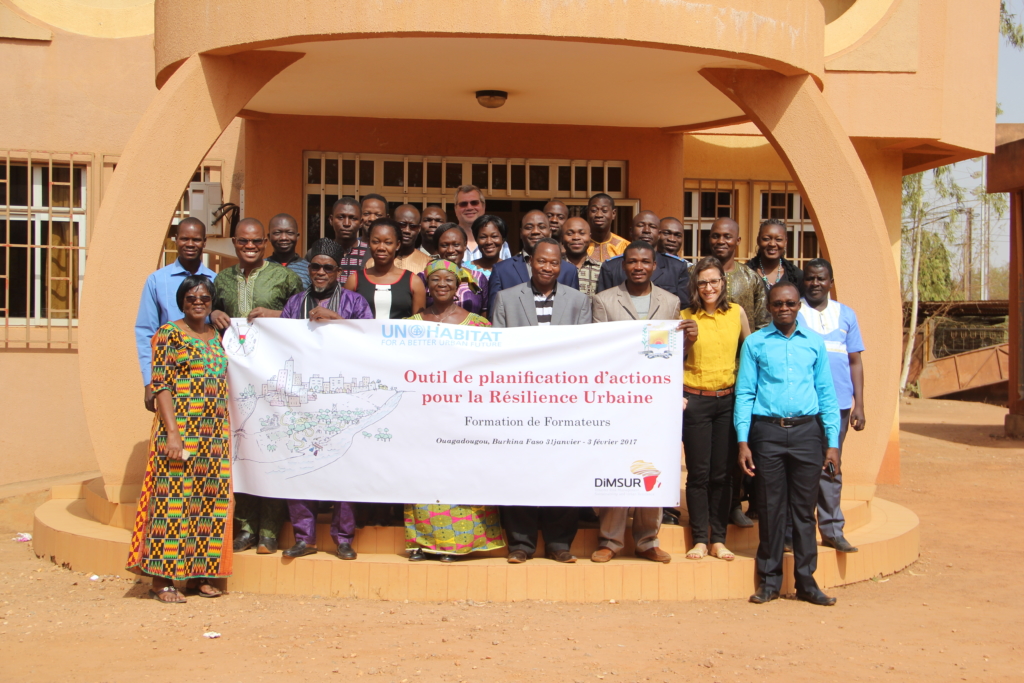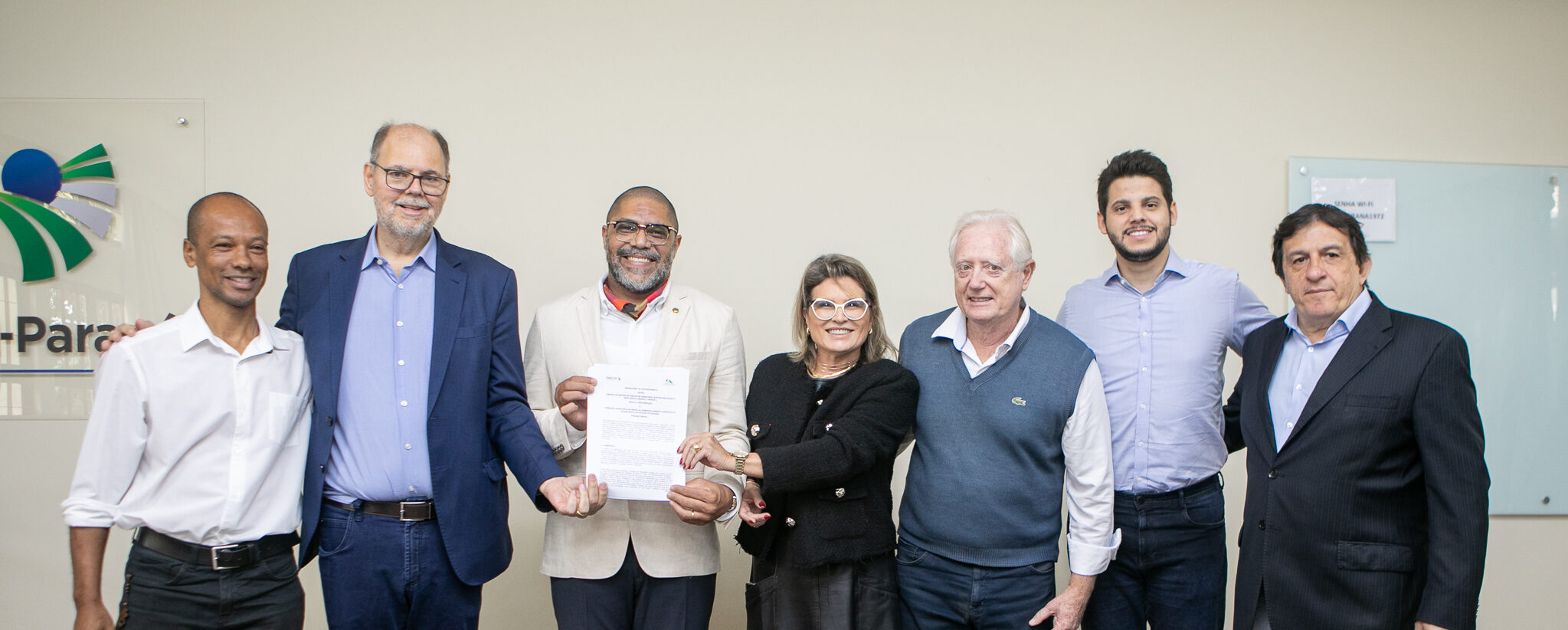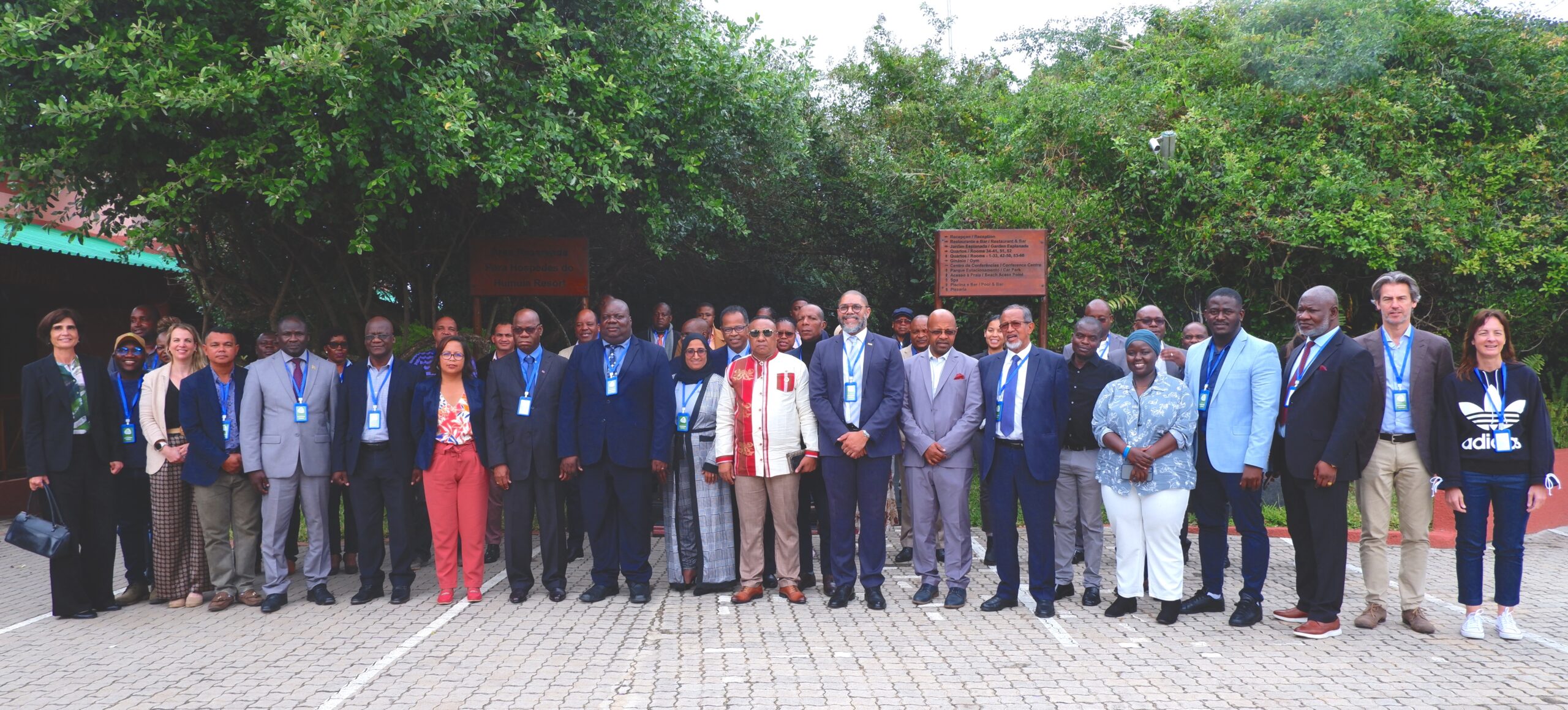DiMSUR and UN-Habitat were in Ouagadougou to deliver the first training of 2017
February 2017 – The DiMSUR and UN-Habitat team delivered the Training of Trainers in Ouagadougou, Burkina Faso from 31 January to 3 February to enable participants to conduct the City Resilience Action Planning Tool (CityRAP) in their municipalities. The four-day capacity building programme enables local trainees to plan actions that progressively reduce disaster risk, addresses climate change, and build urban resilience in their communities.

Third two (32) professionals from Burkina Faso were introduced to the theoretical knowledge and practical skills to conduct the implementation of the City RAP Tool within a municipality, in particular neighborhoods or sub-cities. Participants from different backgrounds attended the training, including representatives from the Municipal Council and sub-cities of Ouagadougou, the National Association of Municipalities, civil protection services, the National Institute for Urban Development, the Ministry of Urban Planning, academic institutions, members of Civil Society Organizations and community representatives, NGOs, as well as representatives of key partners in the country such as the World Bank, UN-OCHA, UNDP, IOM and the West African Economic and Monetary Union.
The training benefited from the presence of Chiara Tomaselli (International Consultant at UN-Habitat Mozambique), Mathias Spaliviero (Senior Human Settlements Officer at the Regional Office for Africa, UN-Habitat), Felix Vollmann (Communication Specialist, UN-Habitat Advocacy, Outreach and Communication Unit), Basilisa Sanou (UN-Habitat Head of Programme in Burkina Faso) as well as Clementine Kanyala and Yombi Ouedraogo (UN-Habitat Burkina Faso), who actively assisted in the organization and delivering of the Training of Trainers.

The training was structured in two parts. First, trainers focused on theory and concepts for understanding urban resilience and risk reduction while discussing how the theory applies in the national and local urban context. During the second part, trainers focused on explaining and applying the CityRAP methodology through simulations.
The CityRAP process was simulated to enable participants to conduct the methodology to produce a draft Resilience Framework for Action Ouagadougou’s sub-city Arrondissement nº8. Participants simulated planning of actions, proposing a list of actions for each priority issue. They also were taught how to prepare the required materials and how to cope with unforeseen circumstances on the ground.
The CityRAP Tool is emerging as a powerful tool to analyze risks and develop action plans on various scales. In the framework of a new project on building resilience to climate change in informal neighborhoods, CityRAP Tool will be rolled out to other cities in the African continent.
According to the CityRAP trainer, Chiara Tomaselli, “the simulation exercise is an essential component of the training methodology since some activities are complex and required a specific step by step training. Moreover, simulations allow participants to gain confidence about their role as future trainers”.

The Training of Trainers methodology is a critical step for the dissemination of the CityRAP Tool, as it allows to understand difficulties encountered by trainees and what can be improved for better implementation.
The CityRAP Tool has been developed by UN-Habitat and DiMSUR between 2014-2016 and has been implemented in Chokwe, Vilankulo and Mocuba (Mozambique), Zomba (Malawi), Morondava (Madagascar) and the sub-city of Lideta in Addis Ababa (Ethiopia). In parallel, the team delivered several training of trainers in Sub-Saharan Africa aiming at building national teams of trainers (e.g. Union of Comoros, São Tomé e Principe, Cabo Verde and Guinea Bissau). The trainees are now able to implement the CityRAP Tool with the support of the UN-Habitat team in their respective countries.







